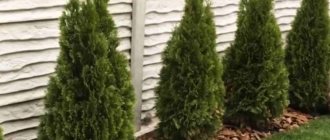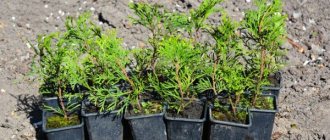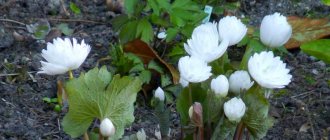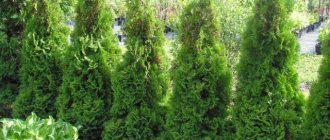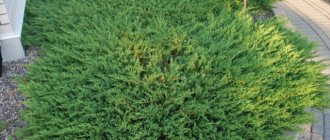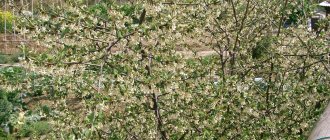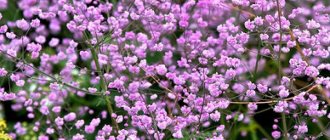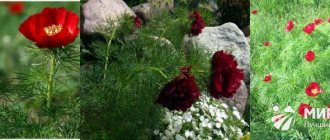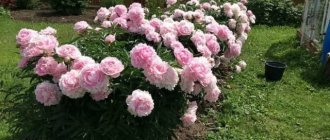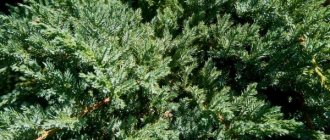Seven secrets of success
| 1. Growing temperature: can be grown during the growing season at normal room temperature in the range of 18 – 24° C. In winter, a rest period should be allowed at a temperature of about 10° C. |
| 2. Lighting: a well-lit location with access to direct sunlight in the morning and evening for 4 - 5 hours daily and light shading during the daytime. |
| 3. Watering and air humidity: evenly moistened soil during the growing season - in spring and summer, autumn and winter, limited watering with water at room temperature and sufficiently high air humidity. |
| 4. Pruning: formative - regularly pinching the tips of young shoots, sanitary - removing old and diseased stems, it is also necessary to remove fading flowers. |
| 5. Soil: loose texture, organically rich, with good drainage and acidic pH. |
| 6. Feeding: in spring and summer, feed with mineral fertilizers 2 times a month; if kept cool in autumn and winter, stop feeding until spring. |
| 7. Reproduction: stem cuttings in spring and summer, seeds. |
Botanical name: Scaevola.
Scaevola flower - family
Origin. Australia, New Guinea.
Description. Scaevola is a perennial evergreen subshrub with vertical or lodging, thick, branched stems. The leaves are small, fleshy, oval or lanceolate, green. The edges of the leaf blades have large teeth. The flowers appear at the tops of the stems, in shades of white, pink, lavender, and lilac. A distinctive feature of the flowers is that their long, pointed petals are arranged in a fan. In the evening hours, scaevola fills the air with a pleasant aroma.
Height. Scaevola grows quickly and does not exceed 20 cm in height; the stems can reach a length of 1.5 m.
2. Scaevola planting and care
2.1.Reproduction, growing from seeds
Most often, scaevola propagates vegetatively, using half-ripe stem cuttings. Fresh seeds are sown in the spring, germination occurs within 1 - 2 months at a temperature of about 22 - 25 ° C. Plant seeds quickly lose their viability.
↑ Up,
2.2.Containment temperature
Normal room temperature in spring and summer. During the winter months, plants should be given a cool place with a temperature of around 10°C to allow them to go into a dormant period. Do not expose scevola to temperatures below 4°C - the plants may be damaged and even die.
↑ Up,
2.3.Lighting
A very light-loving plant that requires at least 4 hours of direct sunlight daily. Use light shading during the daytime; in autumn and winter, provide the location with maximum light. In low light conditions, flowering will be less abundant.
↑ Up,
2.4.Home care
Scaevola is unpretentious and does not require much care. Plants will appreciate being outdoors during the warmer months. Regularly pinch the tips of the shoots for better branching, remove fading flowers to extend flowering time. Stems that are too long can be cut off before the dormant period begins.
↑ Up,
2.5.Soil
The soil should have excellent drainage and a slightly acidic pH. A nutrient mixture based on organic matter with the addition of coarse river sand is suitable.
↑ Up,
2.6.Fertilizer
Feed every 2 weeks in spring and summer with a water-soluble fertilizer for flowering plants. In the fall, feeding is stopped and resumed only with the first signs of new growth, in the spring.
↑ Up,
2.7.When it blooms
Blooms continuously from spring until frost.
2.8. Watering scevola
Mature plants can tolerate short periods of drought, but for abundant flowering it is worth keeping the soil evenly moist during the warm season. In autumn, the frequency of watering is reduced in accordance with the ambient temperature. In winter, simply protect the soil from drying out completely. For irrigation, it is advisable to use softened bottled or rain water.
↑ Up,
2.9.Transplant
Transplantation is carried out in the spring, annually.
2.10.Spraying
To increase humidity, you can surround the plant pot with a layer of moist sphagnum moss or use a room humidifier. Spraying can be done in the morning, with water at room temperature. Place plants in well-ventilated areas.
↑ Up,
2.11.Purpose
Scaevola ampelous is a gorgeous plant for hanging baskets. Can be grown as a ground cover.
↑ Up,
Features of hanging plants and their classification
Depending on the method of growth, ampels are divided into several subspecies:
- creeping;
- climbing;
- curly;
- multi-socket.
Some of them look like vines, growing upward and having aerial roots. Others have many tendrils that help the plants cling to a mesh, arch or fence. Another group is cascading hanging plants for the garden. These are the ones that can be seen most often: gazebos, terraces and balconies are decorated with such pots.
Creeping ampels decorate horizontal surfaces. This is the so-called “rug”. This variety may have inflorescences or consist of only leaves. Creeping hanging plants decorate garden paths, zone space in the yard, and are used to complement flower arrangements.
Curling ampels decorate fences, metal and wooden arches. In order to rise up, these flowers need guides - stretched threads and ropes. With the help of climbing plants, they create “live” hedges, shade the sides of a gazebo or terrace, and decorate roofs.
General description of Scaevola
Scaevola is a perennial plant that is often grown by gardeners as an annual plant, belonging to the Gudeniaceae family. Its homeland is Australia, where it grows right on the edges of the forest. Quite an exotic beauty, many have not even heard of her. It appeared in human culture around the eighteenth century, and was brought to Russia only a century ago.
"Scaevus" is the scientific name, translated meaning "left". The reason for this name is the shape of the corollas of Scaevola inflorescences. It is quite difficult to grow in a flowerbed, but you can keep it on a balcony, terrace or in a greenhouse, where it will be pleasing to the eye. Due to difficulties, it is not very popular.
In nature, its natural habitat, it is presented precisely as a herbaceous plant, a perennial. Depending on the species chosen, you can get either a herbaceous plant, a subshrub, or a shrub. The genus of these plants is advantageous to use when creating flower arrangements, since Scaevola is not too large - its height ranges from forty to seventy centimeters. The plant consists of many thin stems. Often grown in hanging containers.
Its leaves are thin and bright green. They can grow up to 9-10 centimeters in length. The flowers are solitary, consisting of five petals, approximately three centimeters in diameter. The inflorescences are painted in shades from the cold spectrum: purple, blue, lilac. The flowering period of Scaevola is the entire summer season. Each flower lives on average for two weeks, after which a new one grows in place of the old one. Afterwards, a two-chamber ovary is formed. The fruit grows as a drupe, inside of which there is a fairly hard stone.
Examples of decorating a garden using hanging
The beauty of ampels is that they are easy to grow, or you don’t even have to grow them yourself, but buy already flowering plants in pots, or buy beautiful decorative pots and transplant seedlings into them - petunia, pelargonium, fuchsia, begonia.
With the help of hanging plants you can beautifully decorate your patio, gazebo, or terrace. They will look good placed in tubs along garden paths. A beautiful combination can be formed by hanging plants and vines. Lianas can twine around a fence, the wall of a house or other building and serve as a spectacular green background for ampels. If you don't have enough time to grow plants in your garden, decorate your garden with hanging plants, placing them in hanging pots and outdoor decorative planters throughout and you will see that your garden will turn into a paradise.
Ampelous plants will be a real boon for novice gardeners who do not yet have enough practical experience to design and care for a garden. What does the term “ampelic plant” mean? This is a plant that is grown in flower pots, hanging vases, and baskets.
Benefits of hanging plants
To understand which plants are called ampelous, you need to have an idea of what advantages they have:
- the ability to decorate any place in the garden or disguise its nondescript areas;
- mobility in movement - plants can be easily rearranged, changing compositions;
- ease of care, which consists of regular watering and fertilizing. This is their difference from plants planted in open ground, which need to be weeded, hilled and mulched.
Types of hanging plants for the home
There are such varieties of hanging plants:
- climbing hanging plants, which are also called lianas. They have antennae with which they cling to a mesh or grate and climb up it;
- creeping hanging plants that grow in a container suspended high above the floor, their stems hanging down freely.
Ampelous plants for the garden
The most popular hanging plants for the garden include the following types:
- Petunia
, which is one of the favorite plants of all gardeners. It is distinguished by different colors and long flowering, lasting from early spring to late autumn. Petunia is unpretentious in care. A hanging vase with a plant is best placed in a warm, lit place. - Surfinia
. This flower is very similar to petunia. But the surfinia bush is denser and has more flowers. The plant can reach a length of up to 1 m. - Bacopa
. Common in Europe, much less common here. An important condition for its cultivation is compliance with the optimal watering regime. - Begonia
. It should be kept in sunny places; in shade and partial shade it loses its decorative properties. - Verbena
. It is characterized by long flowering, which lasts from early spring to autumn. The soil for planting should be loose and with plenty of fertilizer. The exception is fertilizers containing a lot of nitrogen, to which verbena reacts poorly. - Geranium
(Pelargonium ampelous). This plant loves warm, sunny places and is drought-resistant. - Diascia
. The plant prefers sunlight and light sandy soil. In hot weather it requires abundant watering. - Dichondra
. Looks very good in compositions with other hanging plants. Due to its original appearance, it received the name “silver waterfall”. - Campanula equifolia
. Belongs to the bellflower family. It has stems about 25 cm in length and star-shaped flowers of purple, white or blue. To prolong the flowering period, dead flowers must be removed in a timely manner. - Lobelia
. These plants are either annual or perennial. They take root well in both sun and partial shade. - Nolana is weird
. It has flowers of rich lilac or blue color. It reaches a length of up to 50 cm. The plant is unpretentious in care and is drought-resistant. In the garden it should be placed in a place where there are no drafts. - Scaevola is nice
. It is unpretentious in care, prefers well-moistened soil with plenty of fertilizing.
Fuchsia ampelous
. It will decorate your garden at the beginning of autumn, when it blooms. To properly care for it, you should maintain constant moderate watering and avoid direct sunlight.
The listed types of hanging plants are suitable not only for the garden, but also for the balcony.
As they grow, hanging plants form incredibly spectacular compositions that will decorate any home, balcony or garden.
Methods of propagation of Scaevola
Among gardeners, the methods of cuttings and planting seeds are more popular than others.
Cuttings
- Throughout the summer, cut cuttings for propagation from adult Scaevola with sharp pruning shears. Their length should be approximately 6-7 centimeters;
- Remove leaves from the bottom of the cuttings;
- Treat the lower part with a special solution to stimulate root growth;
- Plant your cuttings in a greenhouse or greenhouse. There you need to maintain constant humidity;
- The soil should be light, nutritious, moist;
- In winter, lightly trim the cuttings, and then move the container with future Scaevola to a place where a constant temperature of 10 degrees Celsius is maintained;
- Water occasionally in winter to keep the soil slightly moist but not wet;
- In the spring, as daylight hours increase, the container is moved to a warm room and watered frequently. These activities are needed to prepare Scaevola for planting in open ground;
- At the end of spring, when the soil is sufficiently warmed by the sun, it can be planted in the ground.
Using seed material
Sowing takes place around March.
- Purchase the necessary seeds from a specialized flower shop;
- Plant them in loose soil, moisten the soil;
- Cover the container with plastic wrap or glass. Ventilate and water from time to time;
- When the seedlings hatch and each sprout has several leaves, plant them in open ground.
How to make a composition of ampelous plants
To decorate a garden with flowers or add them to the landscape design of a site, you need excellent taste. Ampels can be combined not only by color, size or appearance; these plants complement interior and exterior items, combine them with ordinary garden trees and bushes, plant them not only in pots, but also on the roof or on an old stump, for example.
A few simple rules will help you correctly compose a flower arrangement:
- Plants without flowers can be supplemented with any ampels with inflorescences.
- If the composition is symmetrical, its creation begins from the center of the pot or flowerpot, planting the shortest flowers there. The sides of the container are decorated with varieties of flowing ampels, combining their color and shape.
- For a cascade composition, it is necessary to use several types of ampels with different stem heights. The tallest flowers are planted in the far row; as they approach the viewer, the height of the bushes should decrease so that the plants do not block each other.
- If there is an old well, an unnecessary cart, a chest of drawers or a bicycle on the site, they can be effectively enhanced with the help of hanging plants. Several pots with flowers planted in them are attached to these objects and the growth of stems is formed.
- A wooden or forged gazebo is simply created to be decorated with flowers. Here, ampels are hung at the entrance and near windows, pots of flowers are placed on window sills and tables, and corners are decorated with flowerpots with climbing plants (an excellent example of gazebo decor is shown in the photo below).
- An artificial pond or waterfall near the house will also not be complete without hanging flowers. Plants will add color to the pond, and the water, in turn, will provide the flowers with coolness.
- For climbing plants, arches are made of metal, wood or plastic. Such arches decorated with vines decorate the entrance to the courtyard or the path leading to the gazebo.
- Green tunnels made of flowers look especially impressive; a successful example of such an ensemble is shown in the photo.
- You can combine several types of one plant with each other, for example, regular and ampelous carnations.
- Identical plants with flowers of different shades look very impressive and bright. Most often, petunia bushes are combined in this way.
- Another win-win option is to decorate the area with pots of different flowers in the same color scheme. You can choose only plants with red inflorescences, or combine all shades of yellow in a flowerpot.
Dichondra
New for gardeners in the middle zone is dichondra ampelous, which looks beautiful on the facades of houses, hedges and any other vertical surfaces. This decorative leaf plant does not require special care, is resistant to pests and diseases and can be used to decorate gardens and interiors. The most popular variety is Silver Falls with silver-colored leaves. It is recommended to grow dichondra of this variety in a well-lit area. A creeping silvery dichondra resembling a dense mat with small lilac or white flowers.
Care
Watering
For irrigation, use soft, slightly warm, settled water (rain can also be used) in moderate volumes, avoiding overdrying and waterlogging of the soil. The approximate frequency of watering is once every 5-7 days, more often in case of drought.
Feeding
Scaevola needs to be fed regularly, as the splendor and abundance of flowering depends on this. During the summer season you will need at least three mineral and organic fertilizing with the obligatory content of potassium and phosphorus.
Trimming
Timely pruning of elongated, protruding and twisted shoots and pinching the tops contribute to the formation of a beautiful, compact and perfectly round bush. A native of the tropics does not need to remove buds that have finished flowering, since the flowers fall off on their own.
Preparing for winter
Scaevola does not tolerate even minimal sub-zero temperatures. For the winter period, it is recommended to transplant the garden crop into a flower pot and keep it in a bright room with a temperature of about 15 degrees Celsius until spring.
Fuchsia
The ampelous form of fuchsia appeared relatively recently and immediately won the love of gardeners due to its riot of flowering, rapid growth and unpretentious disposition. It is enough to place the container with fuchsia in an area protected from direct sunlight and not violate the basic rules of caring for the plant. The earthen ball in a flower pot should be moist at all times, but not over-moistened. Watering fuchsia should be combined with spraying, old bare branches should be cut off, and during the flowering period the plant should not be disturbed. Once every 2 weeks it is recommended to apply complex fertilizers under the flower.
Scaevola requirements
The flower is not picky about the composition of the soil. The main thing is that it is loose and fertile. It is best to place scevolas on raised platforms. This will help avoid water stagnation. In any case, before planting the bush in a permanent place, it is necessary to lay a thick layer of drainage in the hole.
If you plan to plant stsevola in flowerpots or pots, then in this case only a fertile substrate, which includes sand, perlite, humus and peat, is suitable. All these substances will ensure good development and abundant flowering of scaevola. The place for growing scevola should be well lit. The plant is not afraid of direct sunlight. Planting in partial shade is also allowed. However, in this case, the flowers lose their brightness. Scaevola does not tolerate places that are too shady. Here she withers and may die.
You can put a pot with a plant outside or plant its seedlings in the garden only when the air temperature remains stable at +20 to +25°C. When it drops below +12°C, scaevola stops growing.
Flowers at home. Details planting, care Scaevola pleasant
| Scaevola belongs to the Gudeniaceae family. There are about 100 species in the genus. Among them there are perennial herbaceous plants, shrubs, and even small trees. Their homeland is Australia. One of the species is Scaevola aemula, a herbaceous perennial grown in our conditions as an annual plant or as a houseplant. We recently came across ornamental gardening, about twenty years ago. This species is also called Scaevola similara. Scaevola pleasanta has creeping shoots up to 50 cm long. The leaves are entire, lobed, sessile, similar to dandelion leaves. Scaevola flowers are interesting. They are about 3 cm in size, and the petals are all located on one side. Therefore, the flower is shaped like an open fan. This is where the Latin name of the plant comes from, which means “left”. The color of the flowers is lilac and blue. Varieties with white and pink colors have been bred. Flowers grow on short peduncles from the axils of the leaves at the ends of the shoots. One flower lives for about 2 weeks. Then it falls off on its own. Flowering lasts continuously from June all summer and autumn in September. Scaevola grows well in full sun or light shade. The soil can be any garden soil that is permeable. Regular watering is required. The plant does not tolerate drying out of the soil. It is useful to apply liquid complex fertilizer twice a month. Scaevola does not lose its attractiveness after rain and wind. To maintain the external shape of scevola, if necessary, you can trim stems that have become too long compared to others. If you want to preserve a plant living in the open ground at your dacha until the next season, then it must be transplanted into a pot in the fall before frost sets in. Scaevola does not tolerate sub-zero temperatures. Trim the stems heavily, but not to the root. Scaevola overwinters in a room in the light. The desired temperature during the dormant period is about +10-14 C. Water not often, only to prevent the soil from drying out. In spring, watering is gradually increased again. It is necessary to plant in open ground or transport pots to the dacha after spring frosts. Scaevola pleasanta is propagated by seeds and cuttings. Seeds are sown in spring in seedling boxes under film, followed by picking. Cuttings can be cut and planted in summer or September. Preferably also under film. Cuttings from an overwintered plant can be taken in the spring as soon as the stems grow. For decorative purposes, Scaevola pleasanta is used as a ground cover plant in open ground. It can be grown in balcony boxes or in containers, or in pots as a hanging plant, in the countryside in the fresh air or again on the balcony. Ageratum, lobelia, and heliotrope will be good neighbors. It will be beautiful to look at the foot of such a vine as kvamoklit. |
Description of the ampelous annual
Let's start the description by pointing out the fact that scaevola has spread in the wild throughout the Pacific Islands and Australia. Hanging annuals grow up to 40-70 cm in height. Ornamental herbaceous shrubs actively grow and bloom in the first year after planting. The stems of the plant are drooping and thin, so they can be grown as an ampelous plant in large flowerpots and hanging flowerpots. The leaves are thin, simple in shape with a leathery surface.
Scaevola blooms with small blue or blue-violet flowers in cool shades. Thanks to the work of breeders, you can find annual varieties with crimson, white and pink buds in gardens. The flowering is very long and bright, it lasts throughout the summer months from the end of May. In Russian regions it does not survive in open ground, as it does not tolerate temperature changes and strong drops to sub-zero levels.
A photo of scevola during the flowering period conveys all the beauty of a garden and potted annual:
Biography
Publius Mucius was born around 176 BC. e. Judging by the date of his consulate, he was a year or two older than his brother Crassus Mucianus. The latter’s transition to the Licinian family made it possible for both brothers to join the priestly college of pontiffs, and later for both to successively receive the post of supreme pontiff. At the same time, Scaevola became the successor of Crassus, and this must mean that he was admitted to the college later than his brother, although he was older. In any case, Quintus Mucius became pontiff in his youth.
The first of the magistrates was the tribunate for Publius Mucius in 141 BC. e. As a tribune of the people, Scaevola demanded an investigation into the activities of one of the praetors of the previous year, Lucius Hostilius Tubulus, who, while holding a murder trial, openly took bribes from suspects. Such an investigation began, and Tubul, realizing the inevitability of his condemnation, went into voluntary exile. In 136 BC. e. Publius Mucius held the position of praetor, and two episodes of his biography are connected with this, about which, however, a minimum of information has been preserved. The governor of Near Spain, Gaius Hostilius Mancinus, was handed over to the Celtiberians as a sign of refusal to ratify the peace treaty he had concluded, but they released him, and Mancinus returned to Rome. Therefore, a legal conflict arose: it was unclear whether a person who had been in enemy captivity should still be considered a citizen of Rome. It is known that Scaevola argued about this with Marcus Junius Brutus. In addition, Publius Mucius considered as a judge the claim of the poet Lucius Actius against an unknown mime who insulted him right from the stage; the verdict was guilty.
In 133 BC. e. Scaevola became consul along with another plebeian, Lucius Calpurnius Piso Frugi. It was in that year that Tiberius Sempronius Gracchus was the tribune of the people, who put forward a bill to divide public land among the poorest citizens. Publius Mucius is considered by researchers to be one of the most influential supporters of the reforms, and, apparently, he supported Gracchus: it is known that the latter consulted with him. Piso went to Sicily to fight a slave revolt, while Scaevola remained in Rome, which strengthened the position of Tiberius Sempronius. It was Publius Mucius who presided over the Senate meeting when Scipio Nazica Serapion demanded the immediate execution of the tribune. Scaevola replied that he would not resort to violence first, but then Nazica arbitrarily led a crowd of senators and their clients to massacre supporters of the reforms. Gracchus was killed; Publius Mucius, according to Cicero, immediately “not only... defended, but also extolled Scipio’s act in numerous decrees of the Senate.”
In 130 BC. e. Publius Mucius became Pontifex Maximus after the death of his brother, Publius Licinius Crassus Mutianus. It is known that in 129 BC. e. he led the Senate opposition to Publius Cornelius Scipio Aemilianus. Researchers date the death of Scaevola to 115 BC at the latest. e., under which the next supreme pontiff is mentioned in the sources.
Types of hanging plants
Petunia. It can rightfully be called the “queen” among all hanging plants. It is rare that a gardener does not plant it on his plot. Flower growers love petunia for its wide variety of colors, relative unpretentiousness and long flowering - from early spring to late autumn. Even if you have completely dried out the plant, just water it thoroughly and the petunia will delight you with flowering again. Prefers fertile and slightly acidic soil, as well as a warm and well-lit place.
Surfinia. In our country, surfinia is often called ampelous petunia for its extraordinary similarity. But it should be noted that if you see a very thick, strong and multi-flowered petunia bush, you know that it is a surfinia. If you follow all the conditions for keeping surfinia, it can reach 100 cm in length.
Pelargonium ampelous (geranium). Until petunia became so popular, geranium reigned on the throne of the “queen” of hanging plants. Back in Soviet times, our mothers and grandmothers decorated balconies, gazebos, and garden plots with geraniums. Even today it is very popular due to its decorative flowering, drought resistance and phytoncidal properties. She is heat-loving and sun-loving. Prefers loam and moderate watering.
Begonia. An extremely unpretentious plant, which is loved by all gardeners no less than petunias and geraniums. However, it should be borne in mind that begonia loves the sun and loses its decorative properties in partial shade and shade. She likes light, slightly acidic soil with humus.
Lobelia. This hanging plant thrives in both sun and partial shade. It always prefers moist soil rich in humus. In addition to annual lobelia, there is perennial lobelia, which requires careful shelter.
Verbena. An extremely unpretentious hanging plant. Flower growers love verbena for its long flowering time - from early spring to autumn. She prefers loose and well-fertilized soil, as well as sunny places. Does not tolerate fertilizers with large amounts of nitrogen.
Diascia. This hanging plant loves sun and sandy, light soil. She, like verbena, does not tolerate excess nitrogen. In hot, dry summers, diascia requires abundant watering.
Dichondra. This is an ornamental deciduous hanging plant. People also call it the “silver” waterfall. Looks great in combination with other plants in hanging pots and baskets. Loves partial shade or sunny places and loamy soil.
Bacopa. This is a perennial plant, but it is often used as an annual plant. It is extremely loved by Europeans, but is little known in our country. Bacopa is native to South America. As long as it's warm outside, bakola will bloom. Loves sunny places or partial shade, does not tolerate waterlogging or dry soil.
Nolana is weird. It blooms with lilac or blue flowers. The shoots of the plant can reach half a meter. Nolana is relatively unpretentious and drought-resistant. Doesn't like very windy places.
Scaevola is nice. It is also unpretentious, prefers loose, fertilized and moist soil.
Campanula equifolia. This is a plant of the bellflower family. People also call it “bride and groom.” Its stems are thin and creeping - about 25 cm long. During the flowering period, the plant is completely covered with scatterings of white, purple or blue star flowers. For long and abundant flowering, it is necessary to promptly remove faded flowers. Grows well in light shade, prefers moist, loose soil.
Fuchsia ampelous. The calyxes painted white and pink, with the edges of the calyx curved upwards, give fuchsia flowers a special grace. She doesn't like the scorching sun. Prefers constant moderate moisture. Falling (ampeloid) fuchsia blooms from early autumn to September.
Ampelous plants are very decorative, take up little space, and if necessary, you can easily move them. Above we have listed only a small part of the entire variety of hanging plants.
If you haven’t planted ampels on your site before, then maybe it’s time to pay attention to them. However, remember that many hanging plants lose their decorative appearance if the basic growing conditions are not met.
The post Ampelous plants in your garden appeared for the first time Manor and stylish garden.
Decorating with hanging plants
The most popular use of ampels is the design of external window sills. Any lush and long-flowering plants are suitable for this: pelargoniums, begonias, petunias, fuchsias.
For landscaping unglazed balconies and loggias, open ground crops are used that can grow quickly and produce large green mass: ampelous impatiens, surfinias, fuchsias, dichondras, petunias. They propagate quickly from cuttings. For the winter, one bush can be brought into the room and allowed to overwinter in the warmth, and in the spring it can be cut out. Then the gardener will have a huge amount of free planting material at his disposal.
Decorating gazebos and open terraces with hanging vines unusually decorates the structure, turning it into a cozy corner where it is pleasant to spend days and evenings. Flowers are planted in pots around the perimeter or cultivated directly in the soil, directing the shoots upward. You can hang pots and baskets on any protruding part of the gazebo.
Decorating the facade begins with the correct choice of variety and type. It’s stuffy and dry near the walls, so only particularly heat-resistant species are suitable: petunia, surfinia, geranium, scevola.
In indoor culture, ampels are grown on walls and in window openings. They unusually decorate the interior and save space on the window sills. Campanula, fuchsia, geranium, and begonia are suitable. Flowering species go well with decorative foliage: chlorophytum, hoya.
Examples of decorating balconies and windows with hanging flowers in the photo:
Pests and diseases
Scaevola practically does not get sick in the garden, but the juicy and attractive greenery of the annual plant often attracts pests. The ubiquitous aphids and whiteflies are especially active when adjacent to indoor plants brought into the garden. For scevola, preventive spraying can be used. If plants become infected, try to begin controlling insect pests as early as possible by spraying with insecticides.
Scaevola practically does not get sick in the garden, but the juicy and attractive greenery of the annual plant often attracts pests. The ubiquitous aphids and whiteflies are especially active when adjacent to indoor plants brought into the garden. For scevola, preventive spraying can be used. If plants become infected, try to begin controlling insect pests as early as possible by spraying with insecticides.
Scaevola is nice.
Advantages of vertical gardening with hanging plants
Firstly: hanging plants can decorate a large garden, a small courtyard, and a modest terrace, making them very cozy and beautiful.
Secondly: they are mobile. By changing the compositions in hanging baskets and containers, you can create a constant feeling of newness.
Thirdly: they can be used to decorate nondescript elements of the site, enliven them, add bright color accents, and emphasize the vertical lines of the garden.
Fourth: caring for plants in pots is very easy. It is enough to water and feed them regularly. There is no need to weed, hill up, fight weeds, or mulch. You don’t have to wait long for the results of your work; they are visible within a few weeks.
Fifthly: some of the hanging plants will decorate your winter garden or insulated balcony during the cold season.
Choosing hanging plants for the garden
The most popular hanging plants, of course, can be considered ivy pelargonium, petunia, surfinia, nasturtium, fuchsia, and verbena. They can be planted in baskets together with other flowers, adhering to the same rules of composition as in a mixed flower bed.
In the composition, plants that differ from each other in height, shape, and color palette look beautiful; they form a living bouquet. When creating such a bouquet in a hanging basket, you must take into account: the plants’ moisture requirements must be the same. As a rule, they choose those that do not need frequent watering, because the main problem with container plants is that the soil dries out quickly.
A composition of dichondra with long bluish-green shoots of red balsam or bright orange nasturtium will look original and bright.
You can plant plants of the same variety in one pot, with a different palette of colors, for example verbena or surfinia. There are endless options for creativity.
Pelargonium
For vertical gardening, thyroid or ivy-leaved pelargonium with medium-sized white, pink, purple, crimson or red simple or double star-shaped flowers is often used. The plant takes root well in loamy soil in a sunny place, is resistant to cold weather, but does not tolerate even mild frosts. It is recommended to regularly feed Pelargonium thyroid with complex fertilizers and water it with milk half diluted with water once a week. Ampelous pelargonium reacts to an excess of nitrogen fertilizers by increasing its green mass, but reducing the number of flower stalks.
Conditions that are comfortable for stsevola
Scaevola has rightfully earned the title of a typical summer pilot. This is a sun-loving crop that should be given the sunniest areas in the garden. If you do not grow it with an eye to color spots and bright accents, the loss of color and its paleness are not critical for you, then you can use scevola for landscaping even areas with partial shade and sparse shade.
The number of flowers in Scaevola will not change due to less lighting, but the color and size will be inferior to competitors growing in sunny places.
One of the main “trump cards” of the Australian beauty is its excellent resistance to bad weather. Despite the touching fan flowers, scevola is not afraid of wetness, drafts, or even winds.
Scaevola pleasant, 'Bombay White' variety. © Scott Zone
Choosing soil for scevola is more than simple. This beauty will feel comfortable in any nutritious, well-drained, water- and breathable soil. Heavy, clayey soils are not suitable for it, as are infertile soils. But scevola feels great on loose soil, raised platforms, and supporting walls.
Potted and ampelous scevolas can be used to decorate both semi-shaded and sunny places (but good lighting is still preferable). But the soil for container scevola needs to be chosen more carefully. Scaevola will bloom profusely only in universal fertile substrates composed of turf soil with a mixture of sand, perlite, peat and humus.
For it, ready-made mixtures for flowering plants intended for indoor crops are usually used. It is extremely important for this summer plant to lay a thick layer of drainage and make sure that the pots and ampels are equipped with high-quality drainage holes.
Scaevola, or pleasant scaevola (Scaevola aemula). © Lotus Johnson
Planting and caring for hanging plants
In order for plants in hanging pots to feel good, they need to create certain conditions, that is, choose the right pot and soil.
Containers that are mounted on balconies or window sills must have a drainage hole and drainage. It is made from broken shards or small gravel. For drainage, you can also use a floral sponge or expanded clay.
Coconut shells, green felt, and a dense layer of creeping grass are placed in hanging baskets so as not to weigh them down. Costs can be reduced by using a piece of green jersey or geotextile. Of course, the appearance of such a basket will suffer a little, but this is not a big deal - growing shoots will quickly cover it completely
The basket is filled with soil - a mixture of sand, peat and leaf humus. You can also use garden compost. Hydrogel granules or vermiculite should be added to the soil. They will retain moisture.
Planting of plants in a container begins from the center to the edges, carefully placing the roots and compacting the soil around them.
After watering, the soil should be mulched with tree bark or moss. Mulch will help retain moisture and protect the soil from weed seeds.
The main thing in caring for hanging plants is regular watering. The smaller the pot, the more often the plants need to be watered.
On sunny summer days this is best done early in the morning or evening. If the situation is such that watering is possible only once a day, then it is better to do it in the evening. Sometimes, when the weather is very hot and the container has been without water for several days, the earth ball can become so hard that it stops absorbing moisture. In this case, you can put pieces of ice on the soil. As the soil thaws, it will gradually absorb moisture. If you don’t have ice on hand, you can place the container in a larger container and fill it with water. Through the drain holes, the soil will be completely saturated with water for several hours.
Regular feeding is of great importance for a beautiful, well-groomed appearance of hanging plants. Therefore, it is better to use complex fertilizers that are intended for plants growing in pots or containers. Feeding should be regular, since this is the only opportunity for the plant to receive the necessary nutrition.
To preserve the aesthetic appearance of hanging plants, it is necessary to regularly remove wilted flowers and trim off ugly and dried shoots.
Scaevola planting technology
Scaevola is an exotic plant from Australia that naturally grows in more tropical conditions. That is why growing this flower in Russia is associated with a number of difficulties. For your efforts to be crowned with success, it is important to properly and thoroughly prepare for planting scevola.
- First of all, you need to purchase scevola seedlings. Since independently growing young plants from seeds or cuttings is a rather labor-intensive process and you need to start preparing six months before planting, many gardeners recommend buying ready-made seedlings.
- You can buy stsevola in specialized stores and garden centers, as well as agricultural firms that professionally grow various ornamental plants.
- You should not buy unfamiliar seedlings at spontaneous markets or from hand, without being sure that these are young Scaevola flowers. And since these are quite rare representatives in Russia, the chance to buy something completely different is very high.
- Before purchasing, decide how tall the plant is and where you will plant it. If you plan to plant in pots, you can take varieties with long shoots.
- Before purchasing from a garden store, it is recommended to carefully inspect young plants. There should be no visible damage, dry or yellowed parts. The soil in the pots should be moist and clean.
- Scaevola, like any other summer plant, prefers to grow in open sunny areas, where sunlight is constantly present in large quantities.
- This plant can be planted in slight shade, but in this case you will lose the brightness of the colors of the flowers and their size.
- Scaevola is amazing because, despite the external fragility of flowers, it is not afraid of strong winds, drafts and rain.
- If you plan to plant scevola in flowerpots, hanging pots and cache-pots, decide in advance on the place where you will place or hang them. This can be done near outbuildings, gazebos or bright accents on the green lawn.
- Scaevola does not tolerate heavy clay and loamy soils, so it is recommended to plant it in light and nutritious soil.
- It is also important that the soil allows air and moisture to pass through well and is drained.
- This plant feels great on loose soils.
- If you are planting a flower in the beds, it is recommended to first dig up the area and loosen the soil well.
- It is recommended to plant scevola in open ground at the beginning or end of May, when the threat of return frosts has passed and the soil has warmed up well.
- If you decide to plant this flower in a flowerpot or hanging pot, then it is important to choose the right container. Scaevola grows quickly and can reach 45-60 cm in diameter, so only one seedling should be planted in one pot.
- In each pot you must first place a layer of good drainage and add high-quality and nutritious soil. It can be composed of humus, leaf and turf soil, sand and peat, and also add a little mineral fertilizer.
- When planting in a flower bed or flower garden, it is important to prepare planting holes according to the size of the earthen ball.
- It is important to place a layer of drainage at the bottom of each planting hole. For this you can use fine gravel, stones or broken bricks.
- Next, nutrient soil is poured in the same composition as for planting in pots.
- It is recommended to replant scevola seedlings together with a ball of earth so as not to damage the root system. Usually in stores, seedlings are sold in separate pots, from which they are easy to remove.
- After planting, each plant must be watered abundantly.
How to care
When growing scevola, there is no way to do without proper care. Only if agricultural practices are followed, the crop will delight you with an unusually beautiful appearance. The plant does not tolerate waterlogging; therefore, abundant watering is unacceptable for it. However, drought also adversely affects the well-being of bushes. They grow poorly and produce few buds.
Experts recommend watering the scevola very moderately and not allowing the soil to dry out completely. For specimens growing in a flowerbed, if there is no rain at this time, it is enough to perform the procedure once a week. In the case when scevola is grown in pots, water the flower daily
You should also pay attention to the quality of the water used for irrigation. It should be soft and warm
Feeding is an important element of care. Without periodic application of fertilizers to the soil, it is impossible to achieve lush and long-lasting flowering of the crop.
The frequency of fertilizing flowers growing in a pot with a complex of minerals is once a week. In this case, the concentration of fertilizer should be 2-3 times less than what the manufacturer recommends. For scevola growing in open ground, fertilizing is carried out 1st time during the formation of buds, and 2nd and 3rd times during flowering.
Caring for scevola
To create comfortable conditions for a plant, you should pay attention to the conditions of its natural growth and, if possible, try to recreate similar ones.
Lighting
The requirements are typical for a light-loving and heat-loving flyer - the landing site should be bright and sunny. If this is not possible, areas with partial shade or even openwork shadow are acceptable, but only if the loss of the bright color of the flowers is not critical for the overall appearance of the flowerbed. This will not reduce the number of buds, but their decorativeness will suffer. If a plant is planted with the aim of creating bright spots in the landscape and creating expressive accents on it, a place open to the sun becomes a necessity.
Despite the general capriciousness of the culture, it has significant “trump cards” - it is not afraid of wind and drafts.
Soil requirements
With soil it’s even easier - any nutritious, well-drained soil will do. Skevola can grow on loose surfaces, supporting walls, and among rock garden stones. Only heavy clay areas with low fertility rates are not suitable for planting.
As for the soil mixture for suspended hanging specimens, its selection must be approached more carefully. For abundant flowering in a limited container volume, a high-quality fertile substrate is required; it is recommended to base it on turf soil, into which a mixture of river sand, perlite, light peat and mature humus is added. A ready-made soil mixture intended by the manufacturer for indoor flowering plants is also suitable for planting. Less desirable, but acceptable, may be a universal primer.
The installation of a high drainage layer and large drainage holes in the potted version is mandatory.
Watering and humidity
Excessive watering, including for future use, is unacceptable. The same goes for swampy soil. However, scevola does not tolerate drought very well - the budding process may stop, and then it will be almost impossible to resume it. What is desirable is not so much systematic watering as competent, attentive watering as needed, taking into account the weather or the condition of the earthen clod. For open ground, the recommended high-quality impregnation with moisture should occur once every 5-7 days, and in the case of hot weather - 2 times more often.
Potted flowers require daily watering in hot weather, but the soil in the top part of the pot must dry out. If this does not happen, this indicates excessive moisture and poor drainage qualities of the container.
Feeding
Regular fertilization is a necessary part of scevola care. You need to start feeding the plant literally from the moment it is planted. Potted options require weekly fertilizing; bushes growing in open ground can be supported with nutrients at least twice a month. Complexes intended for flowering plants are used, and it is advisable to reduce the concentration recommended by the manufacturer by 2 or 3 times.
If the soil in which the plant was planted is highly fertile, 2-3 feedings per season will be sufficient - at the beginning of budding, during the opening of the first buds and a few weeks after the second application. If the soil is depleted and rocky, the frequency of fertilization must be increased to that recommended for potted specimens.
Trimming
Under ideal conditions, the bushes grow even and round, however, in reality this is not always the case, and then pruning comes to the rescue. Shoots that stand out from the general mass, are too elongated, as well as curved and growing inside the bush must be removed. But this time you don’t have to think about regularly pinching fading inflorescences, which is a mandatory part of caring for many flowering crops. This plant easily gets rid of them without outside help, thanks to which it always looks neat and well-groomed.
Features and appearance of the plant
Scaevola is a very beautiful flowering annual that can compete with such “celebrities” as petunia, lobelia and verbena. The flower came to us from Australia, where it grows as a perennial. The climate on the southern continent is very warm; accordingly, growing stsevola in central Eurasia is possible only in the summer.
There are quite a lot of representatives of the genus, but one variety is used in decorating gardens - Scaevola pleasant. The plant can be described as follows:
- An actively branching bush about half a meter high.
- The plant is formed by cutting branches. Its bushes, resembling balls or clouds, are very decorative.
- Leaves are green. They are quite long - up to 9 cm.
- The flowers are small in size. They reach only 2-2.5 cm in diameter.
- The shape of the flower is not quite ordinary. All petals are located on one side of the tube. This asymmetry gives the flower the appearance of a fan.
- Absolutely all flowers have their petals facing outwards.
Several varieties of scevola are known. They differ from each other in the colors of the buds. Petals can be white, lilac, blue, purple. The plant can bloom for a long time, while maintaining a decorative appearance.
Reproduction
In early spring you can start propagating scevola. It is better to do this by cuttings, which is much more effective. To do this, you can take last year’s bush, transplanted into a pot for the winter.
For this method of propagation, we need a stem that has at least two pairs of leaves - this will be our cutting. Size at least 6 cm.
How to propagate:
- Using a sharp knife, cut the stalk obliquely below the beginning of leaf growth by at least 0.5 cm; the scissors will only pinch the separation site.
- If during pruning the cutting begins to secrete juice, soak its tip in a glass of water for a couple of hours.
- Dip the tip of the root in Kornevin, a hormonal drug to accelerate growth.
- Place the stem in the prepared moistened substrate - it is better if it is in a plastic glass, this will allow you to monitor the growth of the roots.
- Place the glass with the spine in a bright and warm place - from +15 to +20 °C.
- It is necessary to replant into open ground no earlier than the size of the cuttings has doubled. Scaevola will grow to the size of a medium bush until next year.
Read also: Pecan nut: where it grows, how to grow a nut, photo of the common pecan
This method is only possible when propagating by seedlings. Like cuttings, it is better to do this in early spring:
- We sow the seeds in loose, fertilized and moist soil.
- We cover the box or pot with the seeds with film or glass and put it in a warm place - after a week you can see the results.
- As soon as the first couple of leaves appear, the scevola can be planted - individual seedlings can be planted in different containers so that they can receive more nutrients. Underdeveloped seedlings do not need to be replanted.
- You can dive with the help of a toothpick - use it to break a hole near an adult plant and carefully pry it up, but you need to grab it by the leaves, not the stem.
- As it grows, it is better to pinch the future bush - this will help it quickly form a root system and main stem.
How to grow hanging plants
The easiest option is to purchase vases and pots with already flowering ampels in a specialized store. In this case, all that remains is to arrange the flowers on the site, arranging them into a single composition.
It is much more difficult to grow flowers from seeds. After all, for the correct combination of ampels, you need to know exactly what will grow from these seeds.
First, the seeds are sown in separate boxes to grow seedlings from them. When the plants get stronger, they are transplanted to a permanent place. Here you need to follow a number of rules:
Each amel flower needs its own soil: some plants love loam, others need peat, and for others the nutritional value of the soil is more important. Information on the required soil composition can be found on the seed package. Or prepare a universal substrate for ampels based on purchased soil and peat. Flowers in pots need to be watered more often than plants in flower beds. The following rule applies here - the smaller the flowerpot, the more often and more abundantly the ampels will have to be watered. Many hanging flowers need watering twice a day. To prevent weed seeds from getting into the pots and to prevent the soil from being dried out by the sun and wind, the soil in the flowerpots is mulched after seedlings are planted in them. Hanging flowerpots, baskets and pots must be filled with light substrates. In some cases, it is possible to use gel beads, floral sponges and other devices to retain moisture. Coconut fiber is considered the most optimal substrate option. The soil for hanging plants must be drained. It is necessary to place fragments of pottery or small pebbles at the bottom of pots and flowerpots
Hanging planters must be equipped with a drainage hole. If you need to decorate a balcony or windows of the upper floors with hanging flowerpots, you need to choose low-growing hanging plants - long stems can easily be broken by a strong wind that blows at altitude. It is important to maintain free space between the ampels; they should not be cramped. No more than 5 plants can be planted in one medium-sized pot (about 30 cm in diameter).
Quote from Alenamir's message
The secret of a luxurious garden is ampelous compositions. Name, description of the variety.
How to plant on your site?
To plant stsevola on your site, you do not need knowledge of any complex rules. The plant is resistant to most external factors and responds well to timely care. It is important to choose a suitable place for it before planting the scevola. It should be sunny, with direct sunlight most of the day. If necessary, can be planted in openwork partial shade. In such conditions, the plant also develops without any problems. The flower is very sensitive to cold, so choose a place on the site that will be protected from drafts and strong gusts of wind.
To avoid problems with growing annuals, you need light loamy soil rich in nutrients. Powerful drainage plays an important role. A drainage layer of broken brick, shards or expanded clay is laid on the bottom of the holes. Soil acidity is recommended to be neutral. In acidic compounds, the root system of scevola begins to rot. It is important that the soil is rich in organic matter. Before sowing seedlings, disinfect the soil. Sowing is carried out in early February, followed by picking the seedlings.
Two simple methods are suitable for propagating scevola: vegetative (cuttings) and seed. In any case, before planting, seedlings are grown at home. For rooting or sowing seeds, take nutritious soil mixtures based on sand and peat. You can grow seedlings in a greenhouse. Such plants will be more adapted to environmental conditions. Therefore, flower growers try to grow annuals in a garden greenhouse.
It is best to root cuttings and sow seeds for seedlings in early March. Closer to summer, around mid-May, you can transplant the plants to permanent places. Home plantings are planted once and gradually adapted to street conditions. This is done daily: take the plantings outside for a few minutes, gradually increasing the time spent outdoors.
Scaevola has very fragile roots, so it is best to pick up seedlings and plant them in permanent places with its own earthen lump. If the root system is injured, rot may occur and the plant will become sick and may die.


